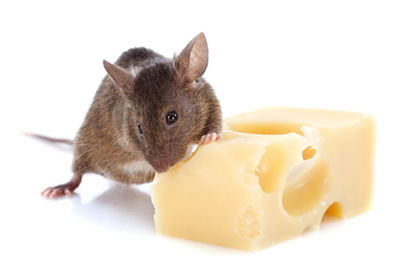
Representative Proteins
Casp-8 is a highly-conserved protein
Isoforms can be proteins that are encoded from the same gene but from slightly different compositions of amino acid due to alternative splicing, a process which mRNA is produced from RNA before being translated into proteins [1]. As a result, isoforms often have slightly different primary, secondary and tertiary structures, leading to slightly or completely different functions.
In human (homo sapiens), there are as least 9 isoforms of casp-8 that have been discovered and sequenced [2]. However only 2 isoforms, 8a and 8b are normally expressed and function to induce apoptosis, while the other isoforms are functionally distinct [3]. Many bacteria, virus (eg. HIV), fungi and organisms such as mice (Mus musculus) and drosophila also express homologs of caspase-8, illustrating that it is highly conserved throughout evolution.
General activation mechanism and functions
Casp-8 is an initiator protein with a role in inducing apoptosis. This involves recruiting procaspase-8, a precursor of casp-8, to complete the death-inducing signalling complex (DISC). This is through binding of its 2 death effector domains (DEDs) located in the N-terminus to the upstream DED of FADD. This is known as the extrinsic pathway of apoptosis [4]. Once procaspase-8 homodimers bind, the cleavage steps are carried out [5]. This autocatalytic process results in an active cleaved heterotetramer of casp-8 containing only the catalytic domains (two p10 and two p18) [6], while the two DEDs are still bound to the FADD adaptor molecule and the rest of DISC. Active casp-8 then interacts with, and cleaves Bid for downstream signalling, cleaving effector casp-3 and casp-9 [7]. Alternatively, it can act directly on them for apoptosis [8].
Although its major role is apoptosis, caspase-8 is also responsible for necroptosis (a form of unprogrammed cell death) [9] and non-apoptotic NF-kb signalling [10].
In general, “procaspase-8” is normally expressed in different isoforms in cells and remains inactive without stimulation. The precursor undergoes several activation processes to generate “caspase-8”, the active protein that transduces apoptotic signals downstream. Therefore, 3 of the homo sapien isoforms procaspase 8a, 8s, 8L, together with homologs from mice (Mus musculus), drosophila (drosophila yakuba) and an caspase generated by an HIV protease (caspase-8p41), will be the main focus of this project.
Homo sapiens: procaspase 8a isoform
Length:
496 amino acids
Mass:
57.7 KDa
Gene:
CASP8
Expression:
Isoform 8a is expressed in a huge variety of cell lines and tissues. It is mostly expressed in the liver and in the immune system. The lowest levels of expression of isoform 8a are found in the nervous system, skeletal muscle, testes and brain.
Function:
Initiates extrinsic pathway apoptosis after receiving stimulation from proteins such as FAS. Continues apoptosis signalling downstream by activating itself to form caspase-8. (More details on the mechanism can be found above and in the introduction section).
Notes:
Isoform 8b (length:479aa) has the same function as isoform 8a. Due to the similarities of length, mass, structure and function between these two isoforms, only isoform 8a has been analysed for comparison with the other representative proteins.
This sequence is the canonical sequence.
Homo sapiens: caspase 8s isoform
Length:
108 amino acids
Mass:
13.0 KDa
Gene:
CASP8
Expression:
Isoform 8s is expressed in bone marrow mononuclear cells (BMMNGs)
Function:
Promotes and regulates apoptosis.
Isoform 8s contains only the first DED and part of second DED at the N terminus with no catalytic domains in the structure. However, Xu et al have reported that isoform 8s can still bind upstream to FADD successfully [11].
Notes:
Individuals with over-expressed procaspase-8s will have increased sensitivity to apoptosis induced by CH11, an antibody targeting Fas.
Homo sapiens: procaspase 8l isoform
Length:
276 amino acids (136bp sequence is inserted between casp8 mRNA exon 8 and 9)
Mass:
32.3 KDa
Gene:
CASP8
Expression:
Isoform 8l is expressed in human peripheral blood lymphocytes [12]
Function:
Inhibitor of apoptosis by interfering with the downstream signal transduction. Since isoform 8l is truncated (an early stop codon formed in alternative splicing process as the insertion in sequence), catalytic domains at the C-terminus that are expected to be present in procaspase-8 are absent in this isoform. However, the 2 DED domains are still present [12]. Isoform 8l can still be recruited to DISC via binding with FADD but active caspase-8 cannot be formed and a catalytic reaction cannot be carried out.
Homo sapiens: Caspase8p41 (cleaved by HIV)
Length:
305 amino acids
Notes:
Caspase8p41 is a molecule cleaved from procaspase-8 at position between phenylalanines 355 and 356 by HIV protease. Casp8p41 contains the two DEDs domains but catalytic site C360 (cysteine) is absent [13]. Casp8p41 can initiate apoptosis of host T cells infected by HIV although the mechanism remains unclear. Algeciras-schimnich et al demonstrated that mitochondria is required for the proper function of casp8p41 and suggested 3 possible mechanisms of casp8p41 initiated cell death [14]:
“1) catalytically through Bid cleavage,
2) formation of heterodimers with procaspase 8 facilitating to induce the proximity model of caspase 8 activation
3) the additional pathway of a direct effect on mitochondria causing matrix swelling, loss of transmembrane potential, and cytochrome c release.”
No flat file was found, however an alternative website with the FASTA sequence is below.
Mus musculus: Caspase 8
Length:
480 amino acids
Mass:
55.4 KDa
Expression:
Same as Homo sapien isoform-8a, many tissues in Mus musculus express this protein..
Function:
Mus musculus caspase 8 has the same function as Homo sapiens isoform 8a, providing evidence that caspase 8 is a highly-conserved protein.
Drosophila melanogaster: Dredd isoform E
Notes:
Also known as caspase-8 delta
Dredd is an ortholog of caspase-8 in human
Isoform E is used as canonical sequence among the 4 dredd isoforms
Dredd is also involved in non-apoptotic NF-kappaB signalling pathway to promote transcription of anti-bacterial peptide gene, which is involved in the humoral response [17]. Scientists have identified 2 different pathways for the activating humoral responses, toll(against fungi and gram-positive bacteria) and IMD (fight against gram-negative bacteria) pathway [15], in order to control the transcription of anti-bacterial peptide gene [17]. Under IMD pathway, when PGRP-LC/ird7 receptor recognises gram negative peptidoglycan (PGN), IMD protein will act as adaptor to interact with both receptor and dFADD in turn recruits dredd [17] resulting in downstream dTAK1 activation and thus the activation of 2 different signalling pathways (NF-kappaB pathway and JNK pathway) [15].
Role upstream of dTAK1 : (1) acting downstream of IMD protein, it interacts with dFADD required for the activation of dmIKK complex. DmIkk complex can then phosphorylate Relish which is required for the cleavage of Relish in NF-KappaB signalling pathways. (2) dredd together with dFADD also activate JNK signalling (3) involved in the cleavage of PGRP-LC receptor [18].
Role downstream of dTAK1 : (1) directly involved in the cleavage of Relish at cytoplasm to generate a NF-kappa like molecule. This cleavage product will then translocate to nucleus to regulate anti-bacterial peptide transcription.
[1] Bottinelli Reggiani C. Skeletal Muscle Plasticity in Health and Disease: From Genes to Whole Muscle. 1st ed. Dordrecht: Springer; 2006.
[2] CASP8 - Caspase-8 precursor - Homo sapiens (Human) - CASP8 gene & protein [Internet]. Uniprot.org. 2017 [cited 2 March 2017]. Available from: http://www.uniprot.org/uniprot/Q14790
[3] Mandruzzato S, Brasseur F, Andry G, Boon T, Bruggen P. A CASP-8 Mutation Recognized by Cytolytic T Lymphocytes on a Human Head and Neck Carcinoma. The Journal of Experimental Medicine. 1997;186(5):785-793.
[4] Tait SGreen D. Mitochondria and cell death: outer membrane permeabilization and beyond. Nature Reviews Molecular Cell Biology. 2010;11(9):621-632.
[5] Krammer P, Arnold R, Lavrik I. Life and death in peripheral T cells. Nature Reviews Immunology. 2007;7(7):532-542.
[6] Lavrik IKrammer P. Regulation of CD95/Fas signaling at the DISC. Cell Death and Differentiation. 2011;19(1):36-41.
[7] Scaffidi C, Schmitz I, Zha J, Korsmeyer S, Krammer P, Peter M. Differential Modulation of Apoptosis Sensitivity in CD95 Type I and Type II Cells. Journal of Biological Chemistry. 1999;274(32):22532-22538.
[8] Scaffidi C, Fulda S, Srinivasan A, Friesen C, Li F, Tomaselli K et al. Two CD95 (APO-1/Fas) signaling pathways. The EMBO Journal. 1998;17(6):1675-1687.
[9] Stupack D, Teitz T, Potter M, Mikolon D, Houghton P, Kidd V et al. Potentiation of neuroblastoma metastasis by loss of caspase-8. Nature. 2006;439(7072):95-99.
[10] Kataoka Tschopp J. N-Terminal Fragment of c-FLIP(L) Processed by Caspase 8 Specifically Interacts with TRAF2 and Induces Activation of the NF- B Signaling Pathway. Molecular and Cellular Biology. 2004;24(7):2627-2636.
[11] Xu Z, Tang K, Wang M, Rao Q, Liu B, Wang J. A New Caspase-8 Isoform Caspase-8s Increased Sensitivity to Apoptosis in Jurkat Cells. Journal of Biomedicine and Biotechnology. 2009;2009:1-10.
[12] Horiuchi T, Himeji D, Tsukamoto H, Harashima S, Hashimura C, Hayashi K. Dominant Expression of a Novel Splice Variant of Caspase-8 in Human Peripheral Blood Lymphocytes. Biochemical and Biophysical Research Communications. 2000;272(3):877-881.
[13] Nie Z, Bren G, Vlahakis S, Schimnich A, Brenchley J, Trushin S et al. Human Immunodeficiency Virus Type 1 Protease Cleaves Procaspase 8 In Vivo. Journal of Virology. 2007;81(13):6947-6956.
[14] Badley A, Algeciras-Schimnich A, Belzacq-Casagrande A, Bren G, Nie Z, Taylor J et al. Analysis of HIV Protease Killing Through Caspase 8 Reveals a Novel Interaction Between Caspase 8 and Mitochondria. The Open Virology Journal. 2008;1(1):39-46.
[15] Leulier F, Rodriguez A, Khush R, Abrams J, Lemaitre B. The Drosophila caspase Dredd is required to resist Gram-negative bacterial infection. EMBO reports. 2000;1(4):353-358.
[16] Hu S, Yang X. dFADD, a Novel Death Domain-containing Adapter Protein for theDrosophila Caspase DREDD. Journal of Biological Chemistry. 2000;275(40):30761-30764.
[17] Zhou R, Silverman N, Hong M, Liao D, Chung Y, Chen Z et al. The Role of Ubiquitination in Drosophila Innate Immunity. Journal of Biological Chemistry. 2005;280(40):34048-34055.
[18] Kim C, Paik D, Rus F, Silverman N. The Caspase-8 Homolog Dredd Cleaves Imd and Relish but Is Not Inhibited by p35. Journal of Biological Chemistry. 2014;289(29):20092-20101.
References



Length:
494 amino acids
Mass:
56.2 KDa
Expression:
Larvae and adult fat bodies (the major immuno-responsive tissue in insects) [15]
Function:
Dredd has the same function as its human ortholog, caspase-8. It is an initiator caspase that interacts with dFADD (the ortholog of FADD) which activates apoptosis by cleaving dredd [16].